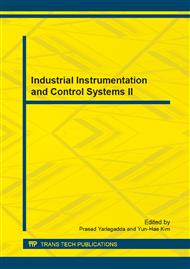p.599
p.604
p.608
p.614
p.619
p.624
p.628
p.633
p.637
Signal-Planning Optimization Model for Bus Priority Signal Intersections Based on Loss Equilibrium
Abstract:
In order to equilibrate the influence of bus priority induction signal control in non-priority phases, signal timing should be optimized in the intersection. Equilibrium methods are proposed for three bus priority strategies: green extension, red truncation and phase insertion. The unsaturated intersection delay is analyzed for a single bus priority request based on linear vehicle flow arrival process, procedures of green loss and loss offset are considered to infer intersection delay formulation. The signal-planning optimal model with total passengers delay minimum and other phase vehicles passing intersection normally for restraint condition is suggested.
Info:
Periodical:
Pages:
619-623
Citation:
Online since:
July 2013
Authors:
Price:
Сopyright:
© 2013 Trans Tech Publications Ltd. All Rights Reserved
Share:
Citation:


